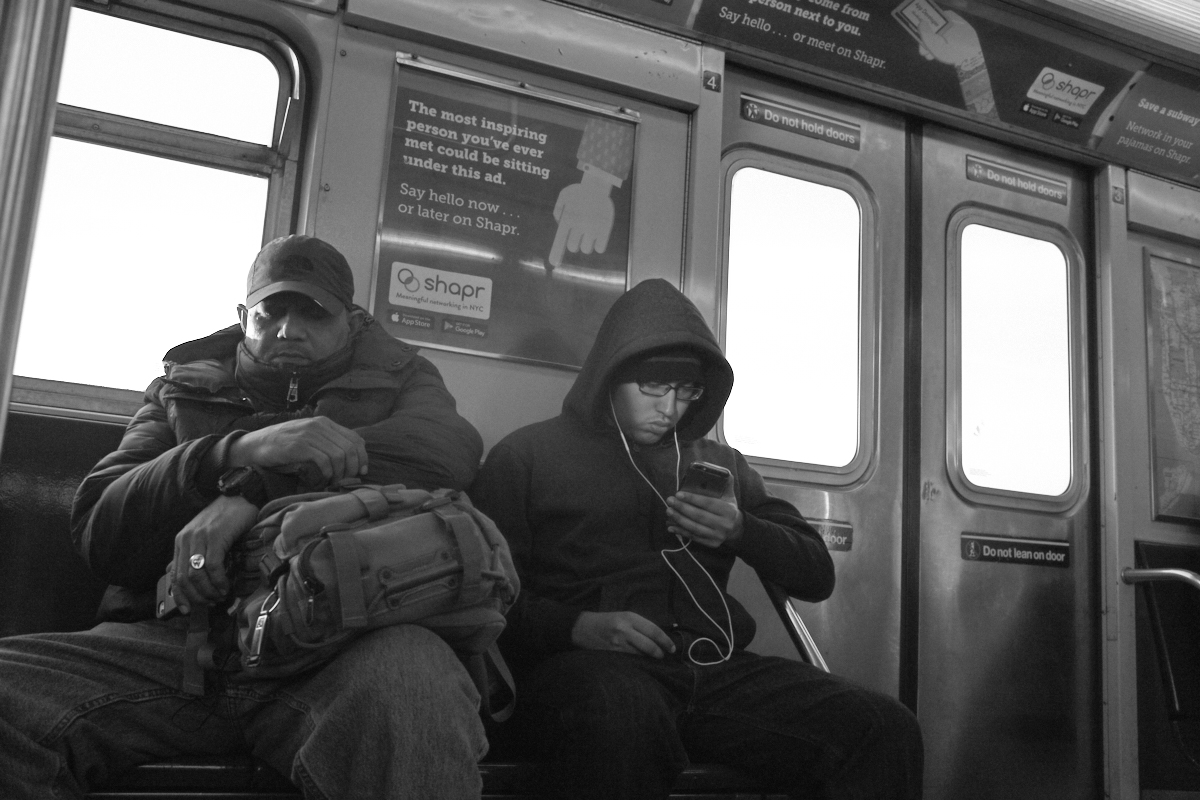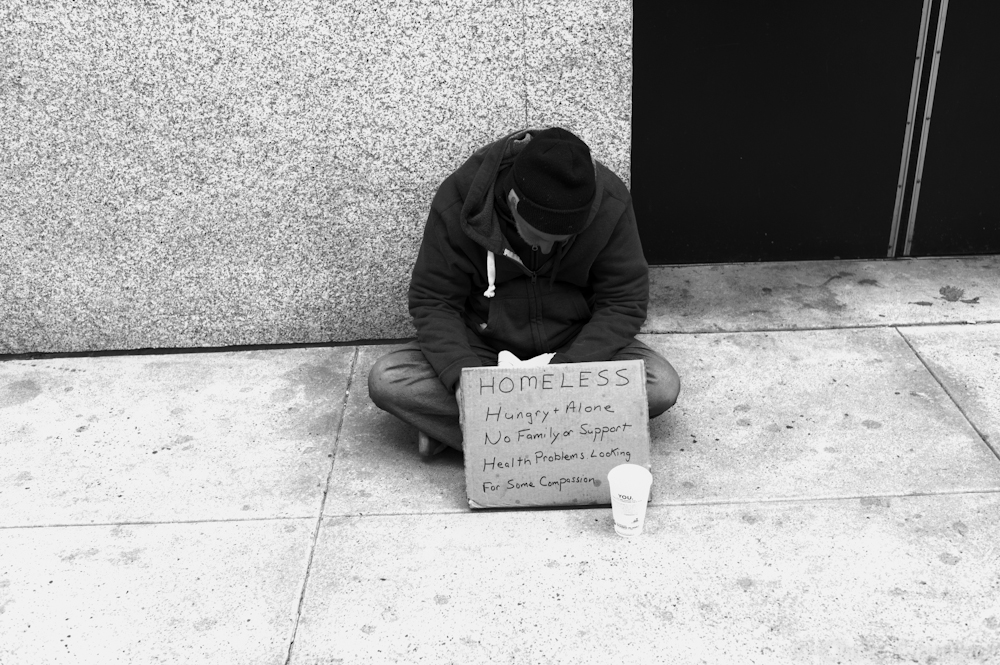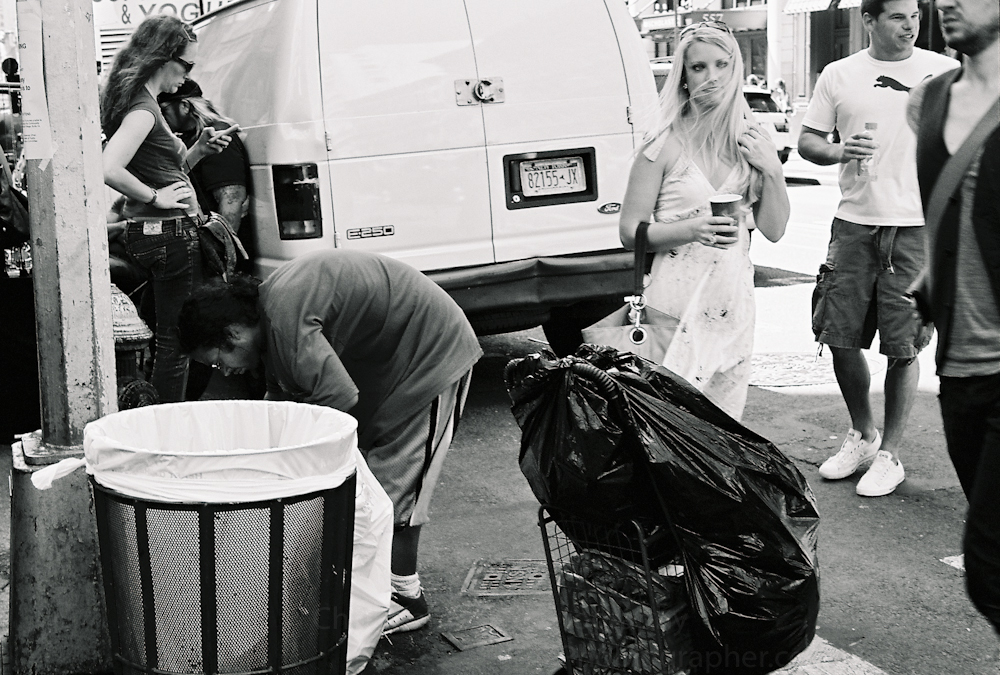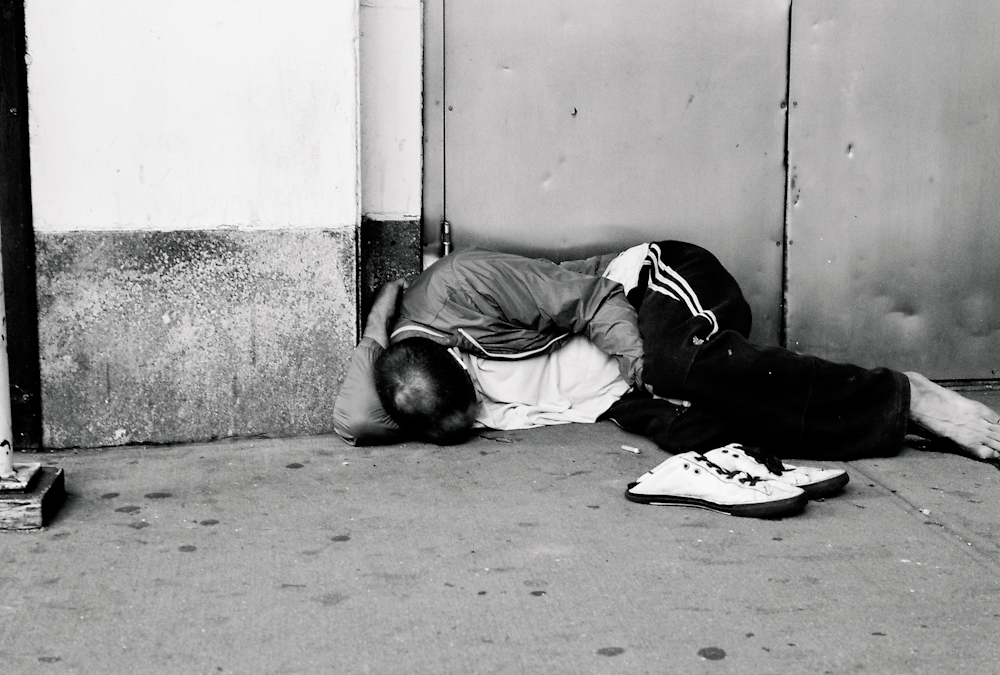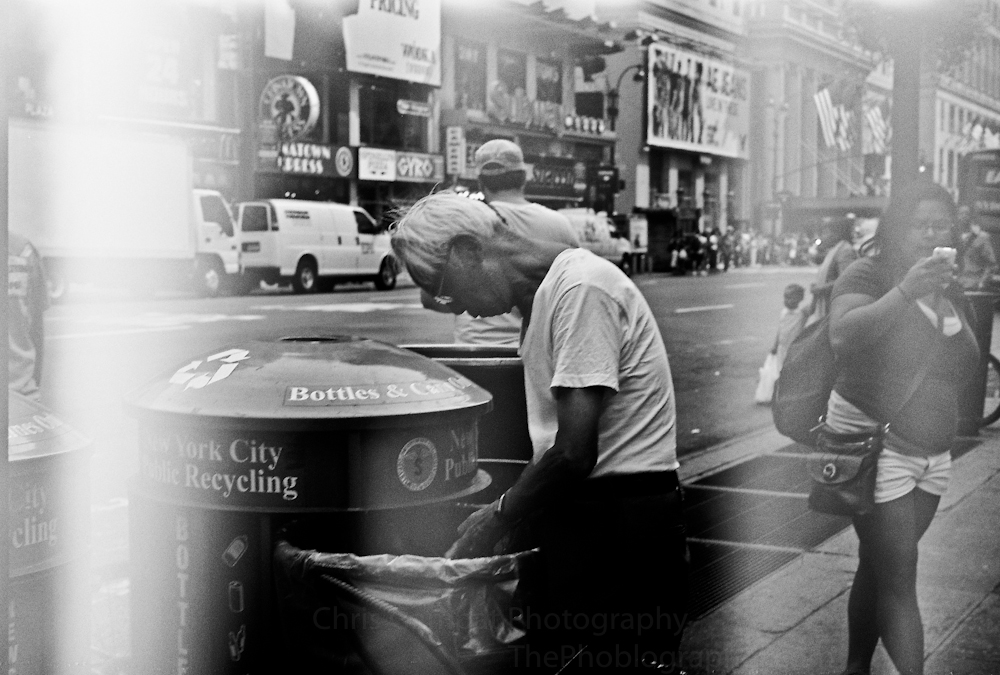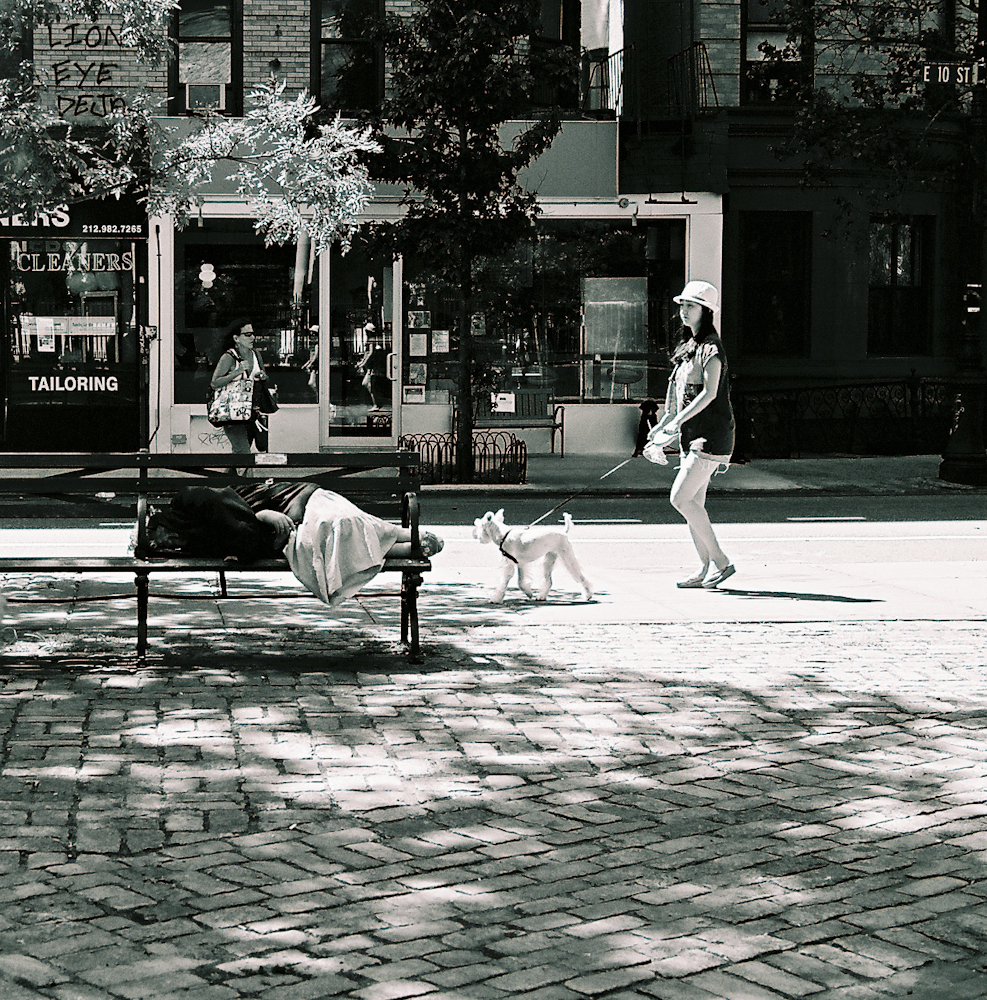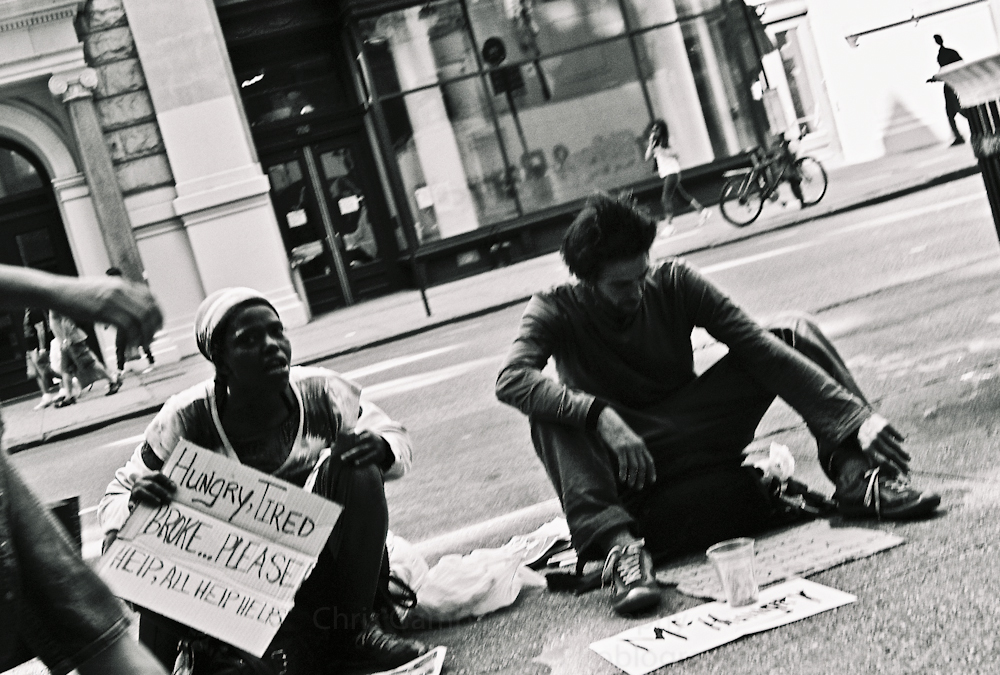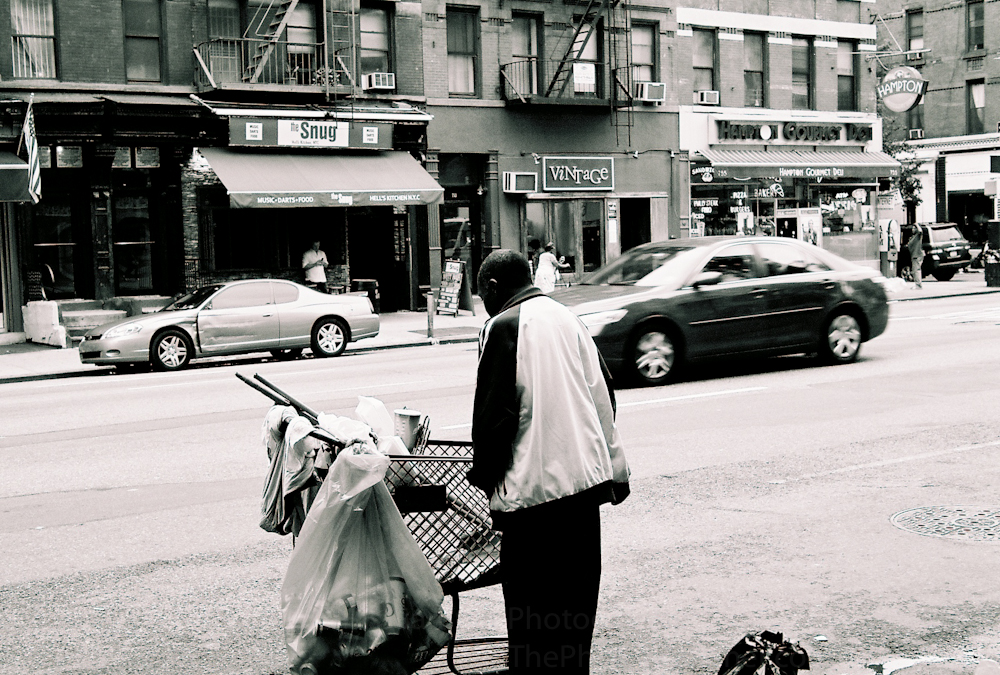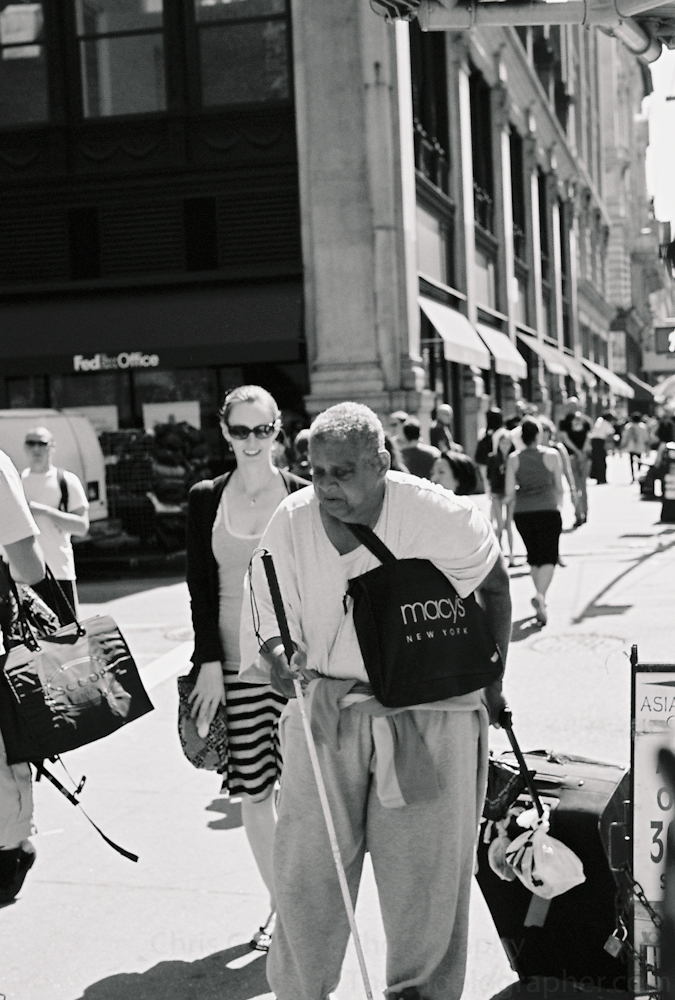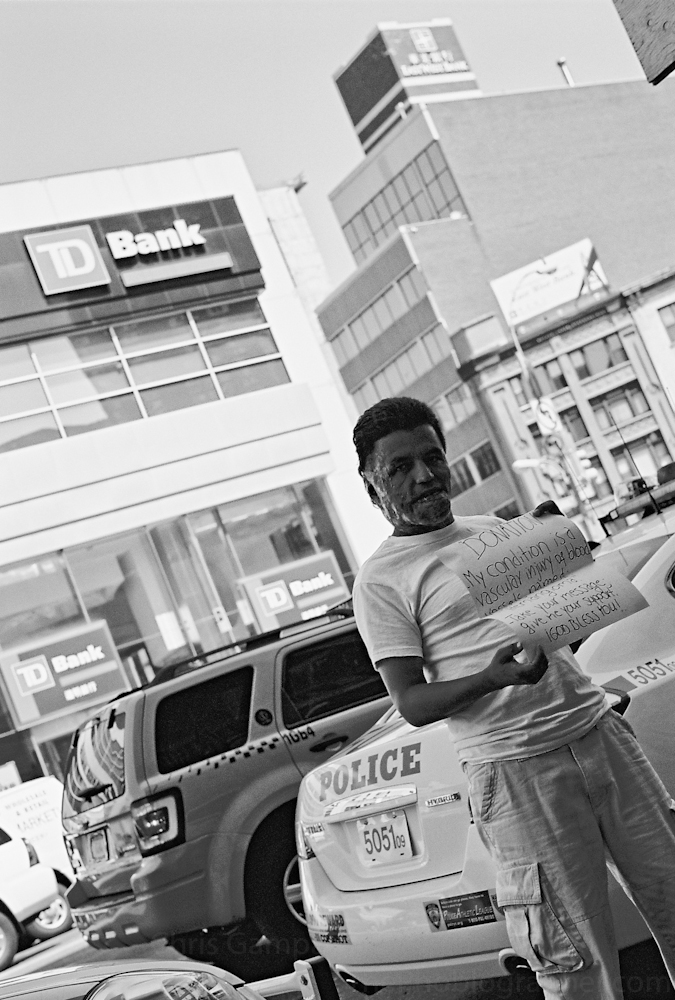When was the last time someone unintentionally wronged you? Did they apologize with intent and sincerity? What were you able to do about it? If you’re like me, this has probably happened to you before. If you were homeless, this would happen almost every single time a street photographer takes their pictures. What’s the photographer’s intention? Some likes on Instagram? Here we’re going to discuss the ethics of street photography and the homeless in a straightforward manner.
Street Photography vs Photojournalism
Some photographers like to say that, with their street photography, they try to tell the message of the homeless and all they’re going through. The problem is that the work focuses specifically on homeless people and doesn’t tell a larger story. Let me be frank. In 2022, street photography will never solve the issues around the homeless. Photojournalism can. And the ethics of street photography in this situation are poorly intended.
Let’s list why, and let’s also talk about how photojournalism does a better job:
Street photography tries to often focus in and tell the story of one person. This is sometimes done without showing us context. Take a look at the photo above: one I’m revisiting from my archives. Is it ethical? It’s obviously not centered on a homeless person; it’s showing a larger scene. There are people who are better off here. One is on her phone and probably not concerned with homelessness. Another looks like a pop star and is enjoying a coffee. Another has some of the cleanest white sneakers ever and clearly has the time to more than finding his next meal.
This photo shows economic disparity. We don’t necessarily know it’s NYC, but we can guess it’s America by the license plate. All these pieces tell us more about the situation this homeless person is in. He is surrounded by well-off people who, at that moment, don’t care. Sadly, this is commonplace here in America because we’ve become used to it. As a buddy has told me before, in Europe, folks try to do something about it. But this isn’t Europe.
The appeal of this photo is how wild this scene is. There’s clear economic disparity and someone isn’t doing as well as others in the scene. In fact, people are just trying to move around the homeless person and don’t seem to care.
This was in 2009, in America, and the country hasn’t changed much since then.
With so many street photographers taking photos like the one below, we can surely say that the ethics of street photography around the homeless should be talked about more.
Above is a photo I also shot. I can honestly say that I did the wrong thing here. The person is clearly not in a good way. We don’t know anything about where they are: just that they’re a fixture blending into the city.
Here’s a photo that’s a bit more ethical because the homeless person isn’t the central focus and there’s more backstory. This person is going through recycling trying to collect cans for some money. Other people are in the frame and they don’t seem to care much. We have a clear idea of where we are: New York City. It doesn’t look that busy on the sidewalks or the road, but there are enough details to tell us a fair amount about what’s going on.
Below are some more images from that series. Looking back, I think I could’ve done a better job. These photos are, ethically speaking, better than a lot of street photography I see these days. Unfortunately, lots of folks don’t talk about the ethics of street photography.
These images were all shot after I finished my journalism degree. What can we tell from them?
- We know we’re in NYC.
- There is a homeless problem in NYC.
- These images were mostly framed to show an entire scene and not just focus on the homeless person. Instead, the homeless were part of a larger scene that shows what’s happening to and around them.
- There is an insane amount of economic disparity seen in these photos.
- Mentally, these homeless people are not necessarily doing well.
- They are begging and most others around NYC don’t care enough to do something about it.
- Considering these images were shot in 2009, it doesn’t seem like much has changed.
Always remember that photojournalism abides by ethics first and often carries the intent to help the situation. If you’ve seen the movie Marcel the Shell with Shoes on, you’ll get it. Street photographers who don’t try to do anything for the homeless and yet photograph homeless people are the same as the influencers in the movie who try to take advantage of Marcel’s struggle without helping him. And those are some hard ethics of street photography.
If you’re wondering if I’ve tried to do things for the homeless, the answer is yes. I’m the former head of a community garden that always gave food to the homeless. And I’ve been a big part of a lot of initiatives that give them food and other aid.


